


|
|
||||||||||||||||
|
|
||||||||||||||||
|
|
||||
|
|
Italy Pisa The Leaning Tower
The Leaning Tower is just one of the buildings forming part of the Cathedral Group in Cathedral Square (Piazza del Duomo) which is a wide walled area situated in the heart of Pisa. The group includes a campanile (bell tower), better known as the Leaning Tower; a cathedral; a baptistery and a cemetery. The main tourist entry is through the gate leading into the complex with all the buildings in view. 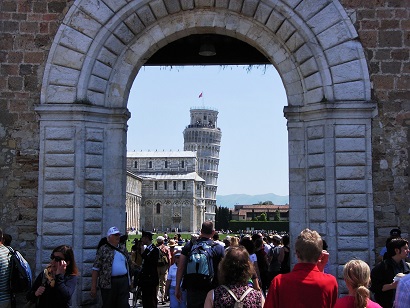 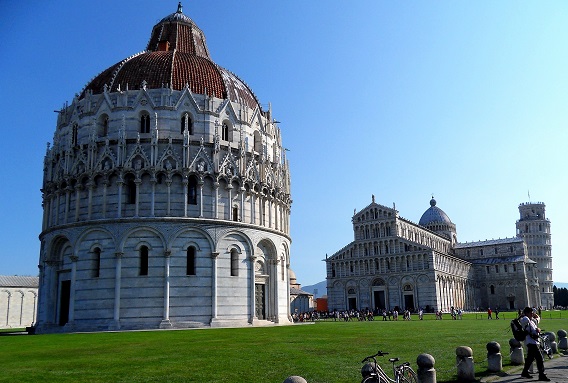 The first building to be constructed was the cathedral which was begun in 1063 after the Pisans' victory over the Saracens at the naval battle of Palermo. 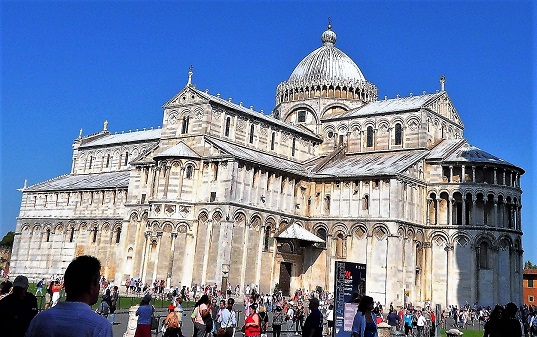 Started in the Romanesque style (Romanesque means in the Roman Manner) of Architecture which can be seen on the lower levels, the upper levels changed to the Gothic style which was replacing Romanesque architecture across Europe at that time; although the alternate red and white bands of marble show Islamic influence.
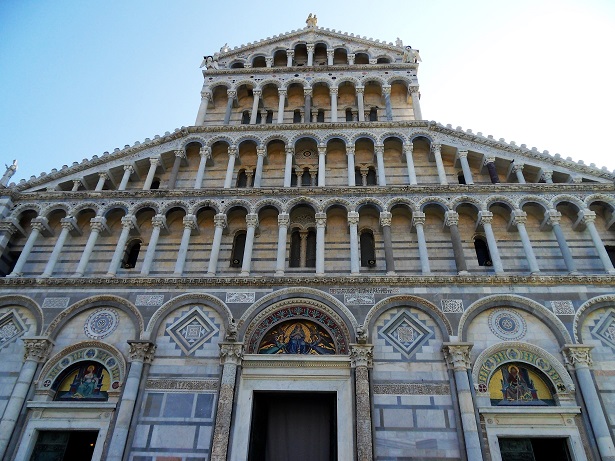 The Doors shows scenes from the New Testament.
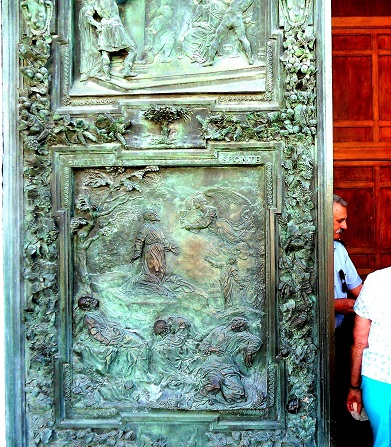 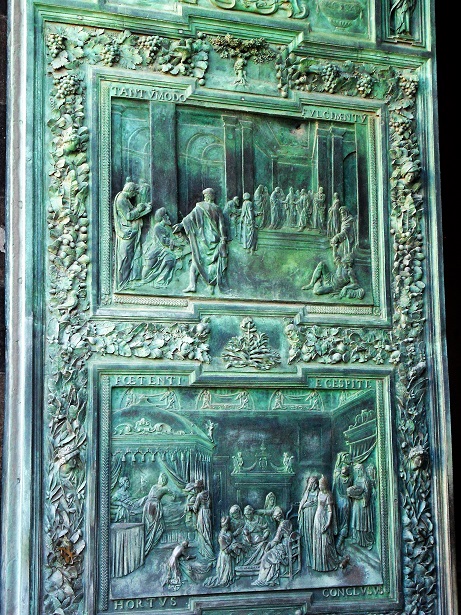 These lead directly into the nave and the many eye-catching decorations and fittings including the ceiling and the mosaics around the altar. 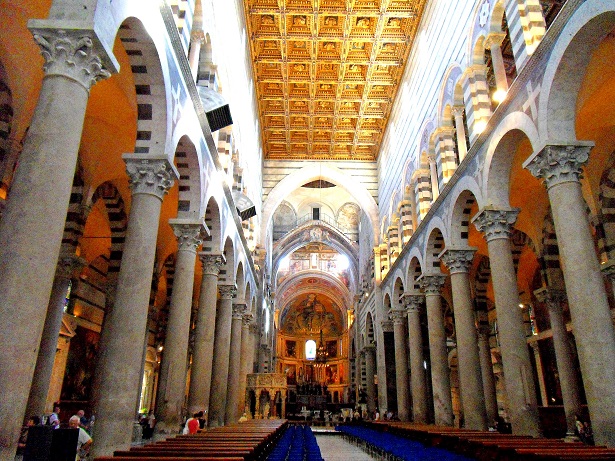 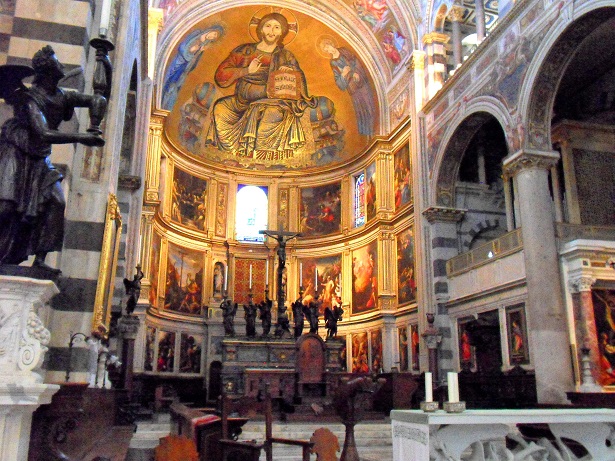 The cathedral was completed in 1272. Situated behind the Cathedral is the cemetery (Campo Santo), which legend says was built where the Crusaders placed the soil they had brought from the Holy Land. It consists of a rectangular loggia with Gothic galleries which are paved with 600 tombstones. 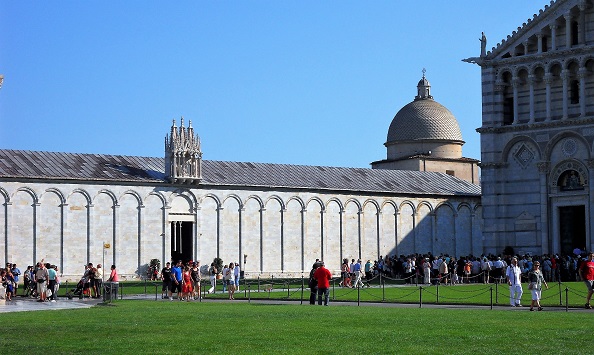 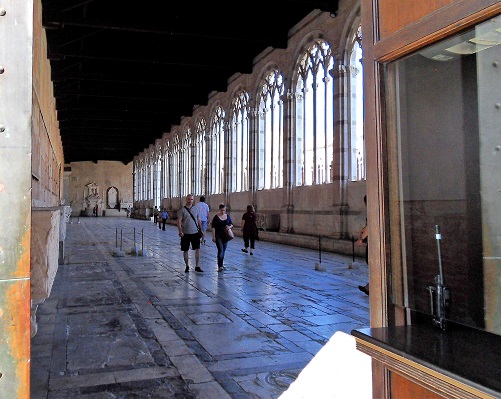 The building itself dates from a century later and was erected over the earlier burial ground and was built between 1273 and 1283. The building is now used as a museum. Construction on the baptistery began in 1153 in the Romanesque style although - like the cathedral - transformed to the Gothic style in 1277. 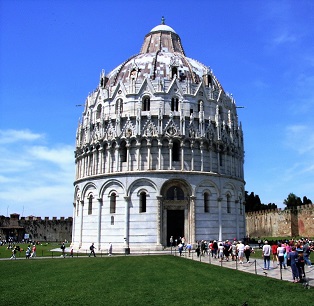 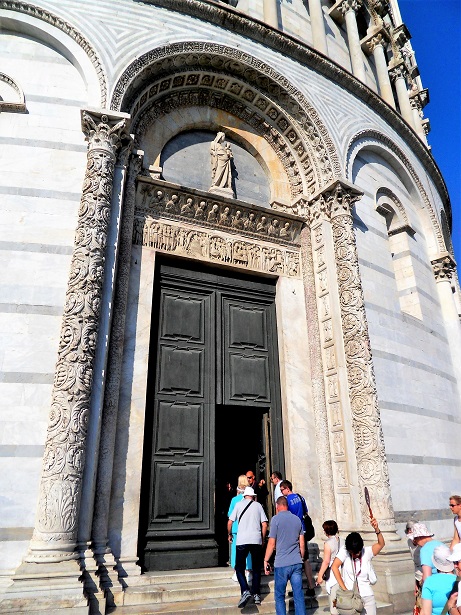 The work was carried out by Nicola and Giovanni Pisano who are known for their Pulpits in the cathedral and the baptistery which was by Giovanni. Giovanni’s work also included the adding of the Dome in the 1300’s. The baptistery was finally completed in 1363. It is Italy’s largest baptistery and is dedicated to John the Baptist. Although it is not as pronounced as the famous tower, it too has a lean. 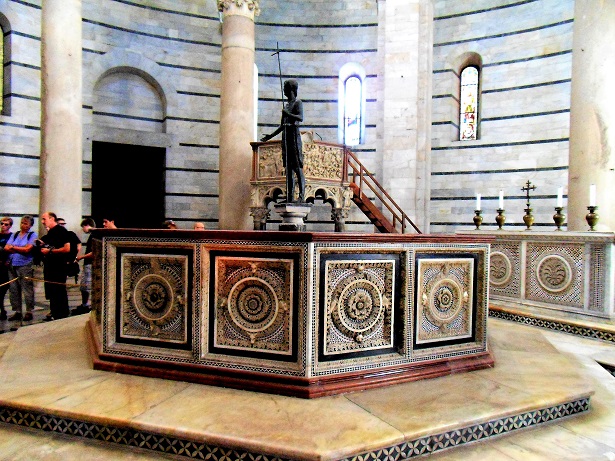 The statues and decorations start at the entrance, although most of the originals have been removed to nearby museums and been replaced by copies the beauty continues into the interior with the octagonal font dating from 1246 and the altar created by Nicola Pisano between 1255-1260.
The building that has come to epitomise Pisa is the campanile (bell tower) which has become known throughout the world as “The Leaning Tower of Pisa”.
 The construction of the tower commenced in 1173 following a bequest and a period of prosperity and military success in Pisa, although due to the wars with Genoa, Lucca, and Florence, work was interrupted on a number of occasions. In 1178 it was halted at the third level when it was noticed that the tower was beginning to sink. This was due to the poor-quality soil - which is highly compressible - and the fact that the foundations only went down 3 metres. An attempt was made to straighten the tower by building upon the lower side when work resumed in 1180 which resulted in one side of the floor being higher than the other giving the tower a slight curve.
The tower was completed in 1350 although the bell-chamber was added in 1372. The tower contains 7 bells which are musically tuned; the largest was added in 1655 and weighs three and a half tons.
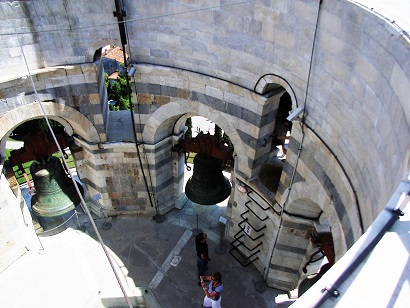 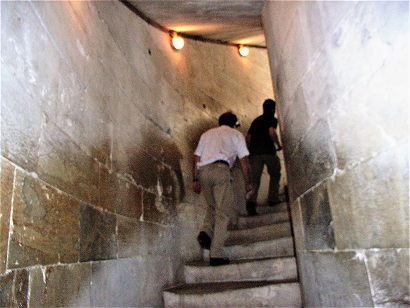 The interior of the structure is of stones and mortar with an exterior covering of marble. A spiral staircase of 294 steps, one meter wide, sits between the inner and outer walls. The lean of the tower has progressively increased over the years from 1.63 metres in 1360 to 5.2 metres in 1997 and without stabilisation the tower was likely to collapse within a couple of decades. The normal method of stabilisation would be to underpin the foundations by inserting new ones below the existing ones or by grouting, these were ruled out as they had been tried in the past, and in 1995 work carried out made things worse when it lurched during ground freezing. It was decided, therefore, to remove soil from underneath the higher side and reduce the lean that way. This was done by placing 870 metric tons of lead weights on the north side of the tower to help stop additional movement. The structure was then braced and supported by steel cables tied to ground anchors to ensure it did not topple during work. Special drills were then used to remove small amounts of soil from under the higher side over several months; this caused the tower to slip back slowly into a more upright position. The final operation was to insert a concrete ring around its base. Work was completed in 2008 and the tower then opened again for visitors. Visitors ascend to the top platform via a spiral staircase which provides views over the cathedral complex and Pisa itself.
See the Leaning Tower of Pisa in Panoramic View Additional information can be found on Encyclopaedia Britannica
|
|
||
|
|
||||
All Photographs were taken by and are copyright of Ron Gatepain
| Site Map |
